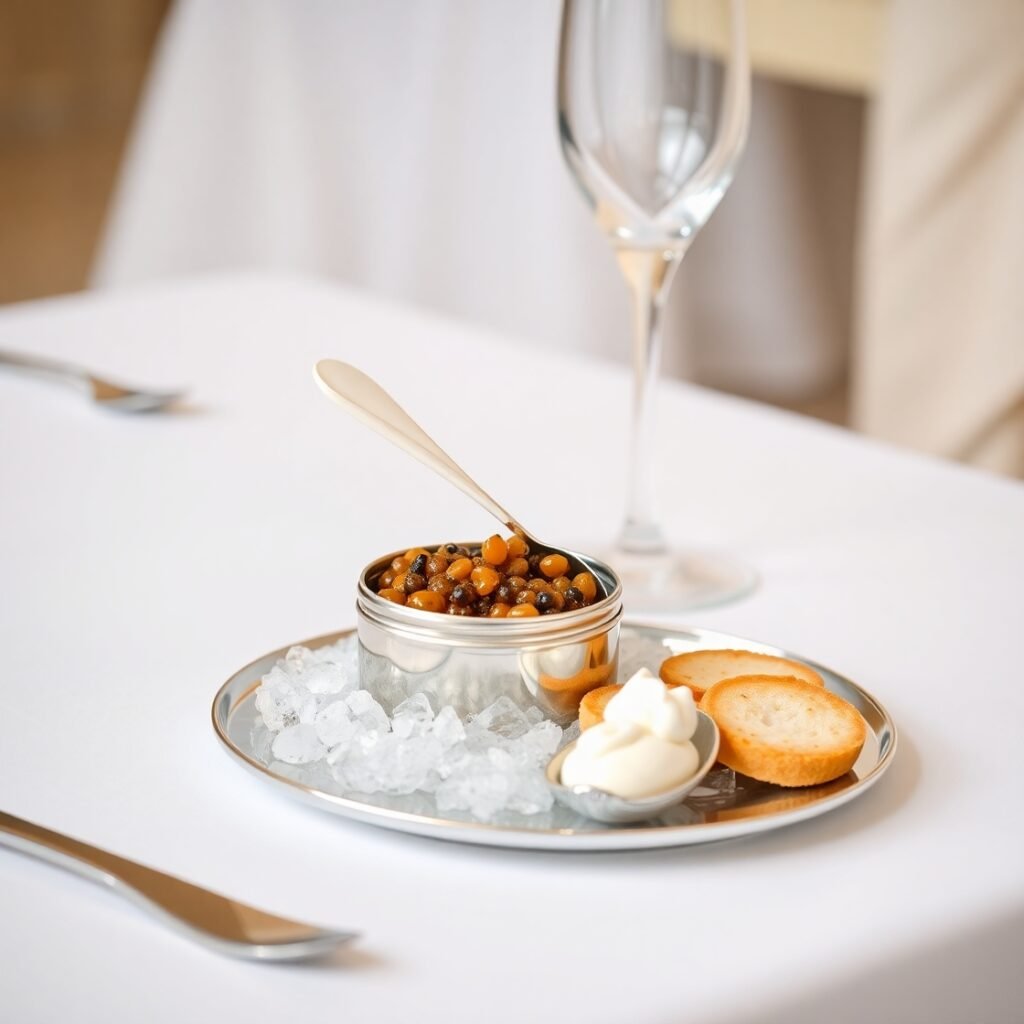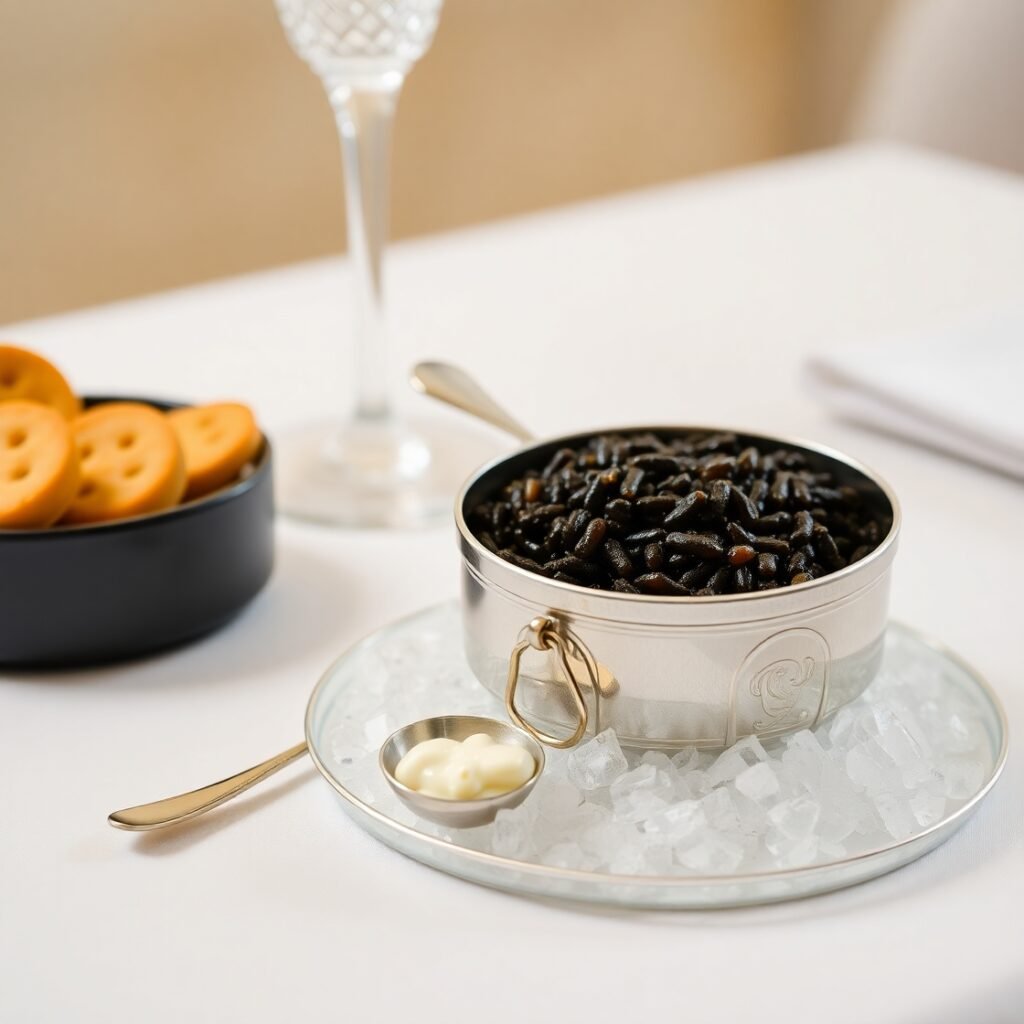This article explores the history, production, economics, and cultural significance behind caviar’s staggering expense. From near-extinct sturgeon types to labor-intensive harvesting, we reveal why this premium treat commands such huge rates– and whether it’s truly worth it.
Caviar, the glamorous delicacy of salt-cured sturgeon eggs, has long been a sign of wealth and overindulgence. With rates reaching $35,000 per kg– and even greater for uncommon varieties– it stands as one of the most costly foods worldwide. But what justifies such an expensive price?

What Is Caviar?
Caviar refers exclusively to salt-cured eggs (roe) from wild sturgeon, a prehistoric fish species going back over 200 million years. True caviar comes from the Caspian and Black Sea areas, where Russian and Persian upper class initially popularized it.
Types of Caviar
Not all caviar is equal. The most prized varieties consist of:
Beluga (Huso huso)– The rarest and most pricey, understood for its large, buttery eggs (approximately $10,000 per 100g).
Osetra– Medium-sized, golden-brown eggs with a nutty taste (3,000– 7,000/ kg).
Sevruga– Smaller, darker eggs with a more powerful taste (1,000– 2,500/ kg).
Kaluga Hybrid– A sustainable option, similar to Beluga (1,500– 4,000/ kg).
Note: If the roe originates from salmon, trout, or other fish, it’s not real caviar– simply “fish roe.”.
Why Is Caviar So Expensive?
Rarity of Wild Sturgeon
Overfishing & Poaching– Wild sturgeon populations (specifically Beluga) have declined by 90% due to prohibited fishing.
Bans & Regulations– Since 2005, Beluga caviar from the Caspian Sea is banned in the U.S. and EU to prevent extinction.
Black Market Demand– Illegal caviar still flows, costing $12,000+ per kg.
2.2 Slow Maturation of Sturgeon.
Sturgeon take 10– 20 years to develop before producing eggs.
Beluga sturgeon can require 25 years– making farming a long-lasting, high-risk financial investment.
Labor-Intensive Production.
Hand-Harvesting– Each sturgeon must be thoroughly captured, and the eggs extracted with surgical precision.
Salt Curing & Grading– Only Master Salters (professionals with decades of training) can properly prepare caviar.
Luxury Branding & Exclusivity.
Caviar is marketed as the supreme status sign, served at Michelin-starred restaurants and elite events.
Luxury brands like Petrossian and Caviar House & Prunier pump up rates due to eminence.
High Demand, Limited Supply.
Growing Wealth in Asia & the Middle East has increased demand.
Minimal legal supply keeps prices skyrocketing.
Is Caviar Worth the Price?
The Case for Caviar.
✔ Unique Flavor Profile– No other food provides the velvety, briny, umami-rich burst of top quality caviar.
✔ Nutritional Benefits– Rich in omega-3s, vitamin B12, and selenium.
✔ Cultural & Historical Significance– A delicacy enjoyed by Russian tsars, European royalty, and modern billionaires.
3.2 The Case Against Caviar.
❌ Ethical Concerns– Wild sturgeon are critically endangered due to caviar demand.
❌ Farmed Caviar Quality Varies– Not all farmed caviar matches the taste of wild-caught.
❌ Overpriced Due to Branding– A.
500.
t.
i.
n.
m.
a.
y.
c.
o.
s.
t.
o.
n.
l.
y.
500tinmaycostonly50 to produce.
How to Properly Enjoy Caviar.
Serving Etiquette.
Utilize a mother-of-pearl or bone spoon (metal changes taste).
Serve cooled (not frozen) on a bed of ice.
Set with blinis, crème fraîche, or vodka– champagne is the timeless option.
Tasting Technique.
Do not chew– let the eggs pop on your tongue for optimum taste.
Prevent strong tastes in advance (no coffee or garlic).
4.3 Affordable Alternatives.
Sustainable farmed caviar (e.g., Kaluga Hybrid, Sterlet) offers comparable quality at lower rates (.
100.
–.
100– 500).
Salmon or trout roe supplies a budget-friendly option.
The Future of Caviar.
Sustainable Farming Innovations.
Aquaculture developments are enhancing caviar quality and reducing environmental impact.
Closed-loop systems avoid farmed sturgeon from getting away into wild communities.
Lab-Grown Caviar?
Startups are explore cellular aquaculture (growing caviar in laboratories).
If successful, this might lower and decrease prices overfishing.
Will Prices Ever Drop?
Unlikely for wild caviar (due to shortage).
Farmed caviar may become more budget friendly as production scales up.
Conclusion.
Caviar’s outrageous price originates from rarity, high-end, and labor branding– not just taste. While it remains a sign of luxury, sustainable and ethical alternatives are emerging.
For most, caviar is an unbelievable extravagance. For those who can manage it, each pearl-like egg delivers a bite of history, luxury, and unrivaled flavor.
Would you pay a month’s lease for a single spoonful?

